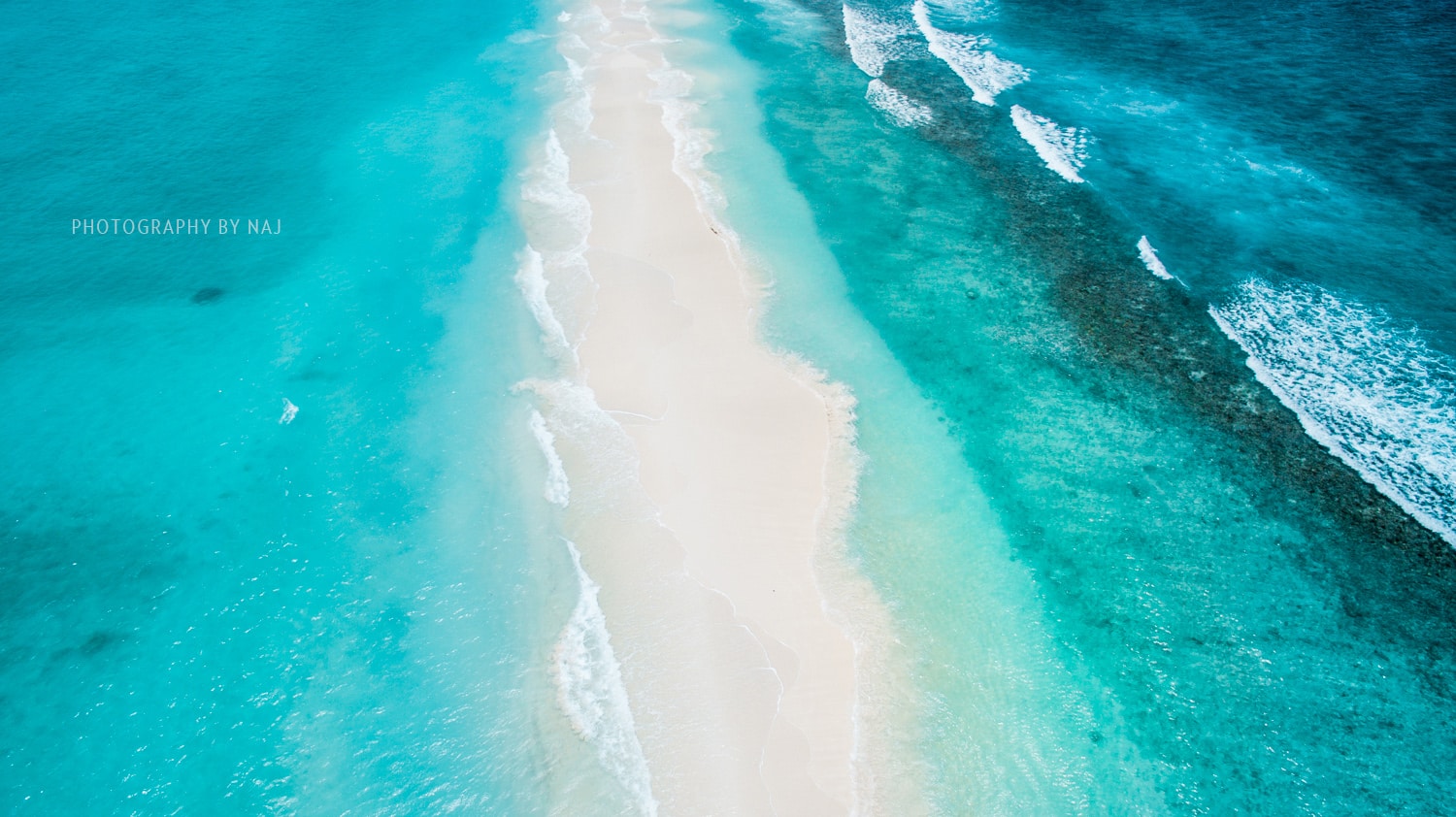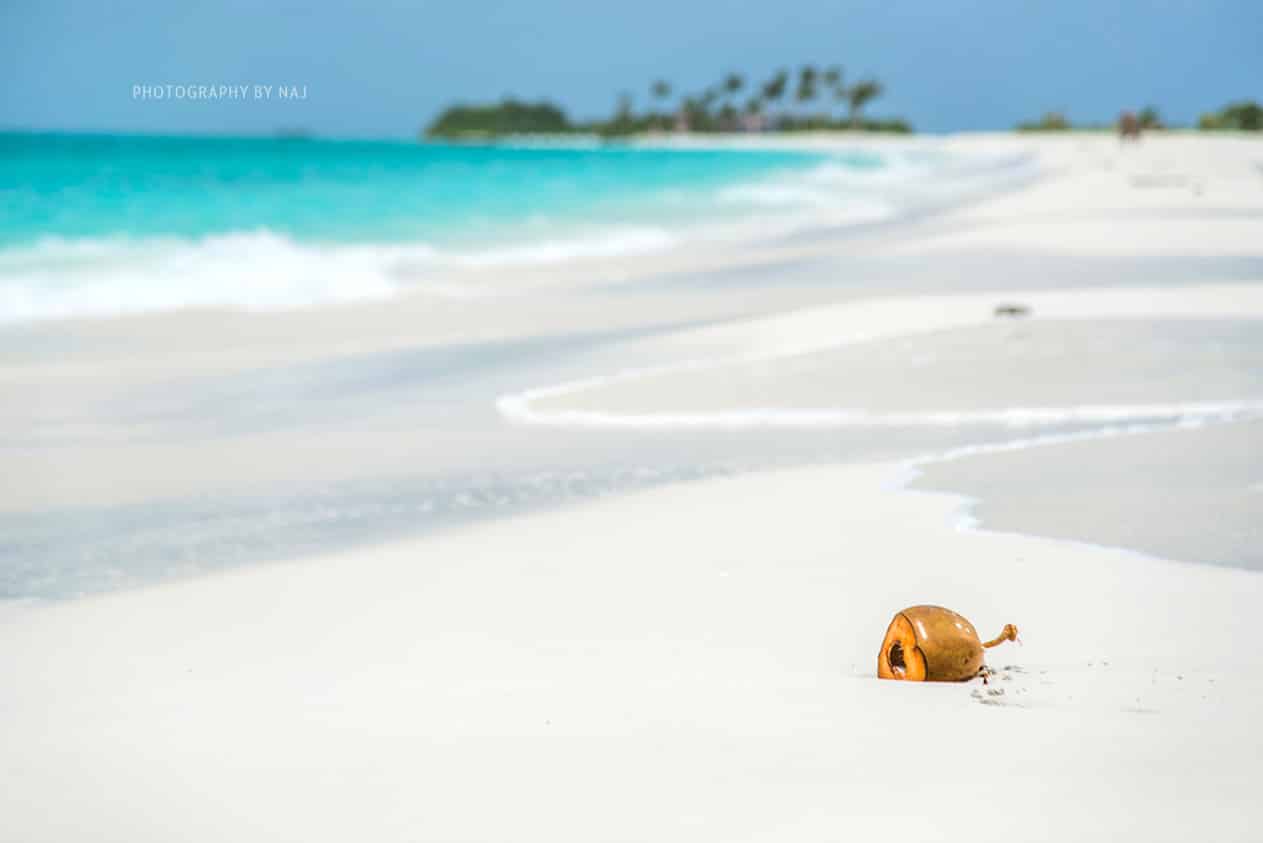Finolhu Philosophy

Words by Daniel Bosley; Pictures by Aishath Naj
Here one moment, gone the next. The status of Maldivian finolhu – or sandbanks – is precarious. Halfway between an island and a submerged reef, they dot the atolls, often peaking their heads out only at low tide.
It is perhaps for this reason that the number of finolhu are unknown, and why early attempts to count the number of islands in the archipelago varied so wildly.
Estimates of the number of official islands that end with ‘-finolhu’ average out at around 60, though none are inhabited, save for the nine that have evolved into resorts.
But this does not mean that a lonely sandbank can never house a community. H.C.P Bell noted that “barren reef-borne sand-banks are known to have risen and become habitable wooded islands,” and theories of atoll formation suggest that even the largest of islands must have started life as lowly finolhu.
Furthermore, when studying the names of officially designated ‘islands’, Clarence Maloney suggested that the majority had no meaning at all in the Dhivehi language, giving consolation to all finolhu out there that some of their inhabited neighbours were, not so long ago, also mere “hillockes of sand” (to use François Pyrard’s description).

Whether a finolhu is officially counted as an island is perhaps more of a legal than a practical problem. Sandbanks that remain above the tide at all times may qualify as islands under international law, though they are of no real use to anyone other than birds and turtles, who frequently take advantage of the privacy to lay eggs.
One local folk tale tells of seabirds who allowed a feathered friend to spend the night on their finolhu, against the wishes of their elder. After the guest left droppings containing seeds, the island was soon colonised with vegetation, and then humans, forcing the birds to find a new home.
Other debris washing onto the secluded sandbanks, such as coconuts and dead fish, may also set events in motion that can fertilise a fickle finolhu into an aspiring island.
Stray seeds become furtive shrubs, steadying themselves with roots reaching down before salty waves can thwart their design. Shrubs become bushes and bushes become trees. Before long (well, after long) an ecosystem concludes with community, concrete and cable TV.
Perhaps there’s hope for us all in the fate of finolhu, though the waves will always be watching.

Leave a comment